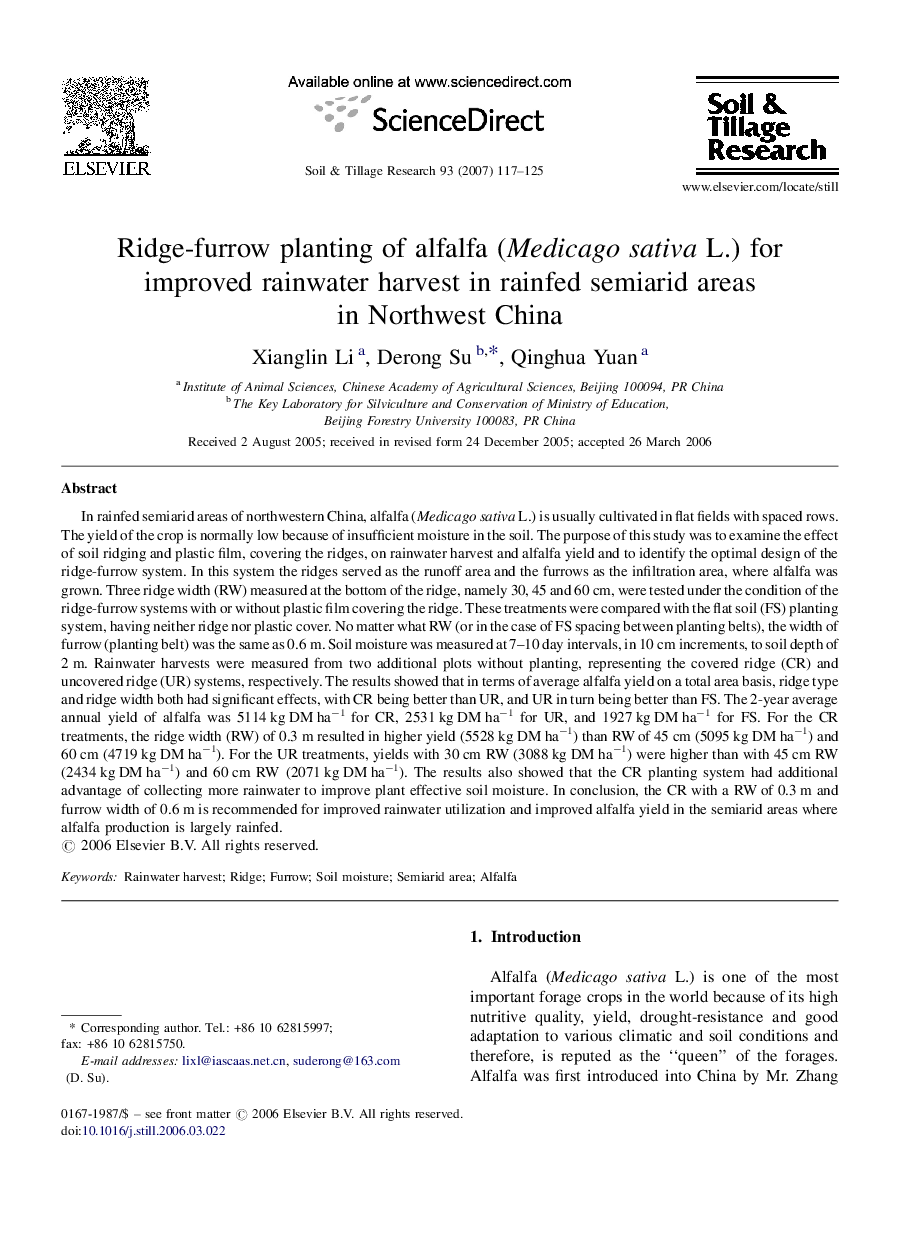| Article ID | Journal | Published Year | Pages | File Type |
|---|---|---|---|---|
| 306729 | Soil and Tillage Research | 2007 | 9 Pages |
In rainfed semiarid areas of northwestern China, alfalfa (Medicago sativa L.) is usually cultivated in flat fields with spaced rows. The yield of the crop is normally low because of insufficient moisture in the soil. The purpose of this study was to examine the effect of soil ridging and plastic film, covering the ridges, on rainwater harvest and alfalfa yield and to identify the optimal design of the ridge-furrow system. In this system the ridges served as the runoff area and the furrows as the infiltration area, where alfalfa was grown. Three ridge width (RW) measured at the bottom of the ridge, namely 30, 45 and 60 cm, were tested under the condition of the ridge-furrow systems with or without plastic film covering the ridge. These treatments were compared with the flat soil (FS) planting system, having neither ridge nor plastic cover. No matter what RW (or in the case of FS spacing between planting belts), the width of furrow (planting belt) was the same as 0.6 m. Soil moisture was measured at 7–10 day intervals, in 10 cm increments, to soil depth of 2 m. Rainwater harvests were measured from two additional plots without planting, representing the covered ridge (CR) and uncovered ridge (UR) systems, respectively. The results showed that in terms of average alfalfa yield on a total area basis, ridge type and ridge width both had significant effects, with CR being better than UR, and UR in turn being better than FS. The 2-year average annual yield of alfalfa was 5114 kg DM ha−1 for CR, 2531 kg DM ha−1 for UR, and 1927 kg DM ha−1 for FS. For the CR treatments, the ridge width (RW) of 0.3 m resulted in higher yield (5528 kg DM ha−1) than RW of 45 cm (5095 kg DM ha−1) and 60 cm (4719 kg DM ha−1). For the UR treatments, yields with 30 cm RW (3088 kg DM ha−1) were higher than with 45 cm RW (2434 kg DM ha−1) and 60 cm RW (2071 kg DM ha−1). The results also showed that the CR planting system had additional advantage of collecting more rainwater to improve plant effective soil moisture. In conclusion, the CR with a RW of 0.3 m and furrow width of 0.6 m is recommended for improved rainwater utilization and improved alfalfa yield in the semiarid areas where alfalfa production is largely rainfed.
